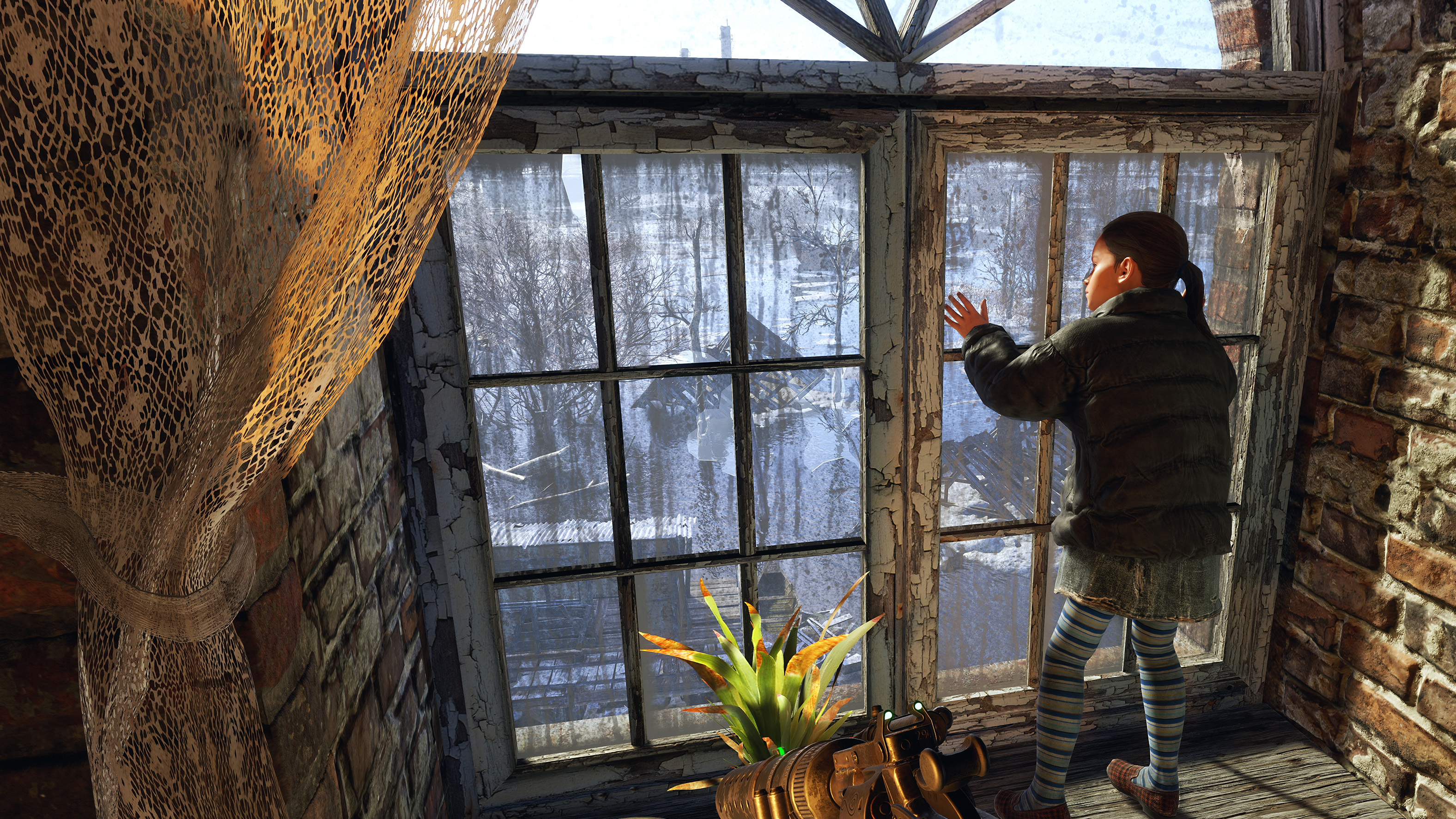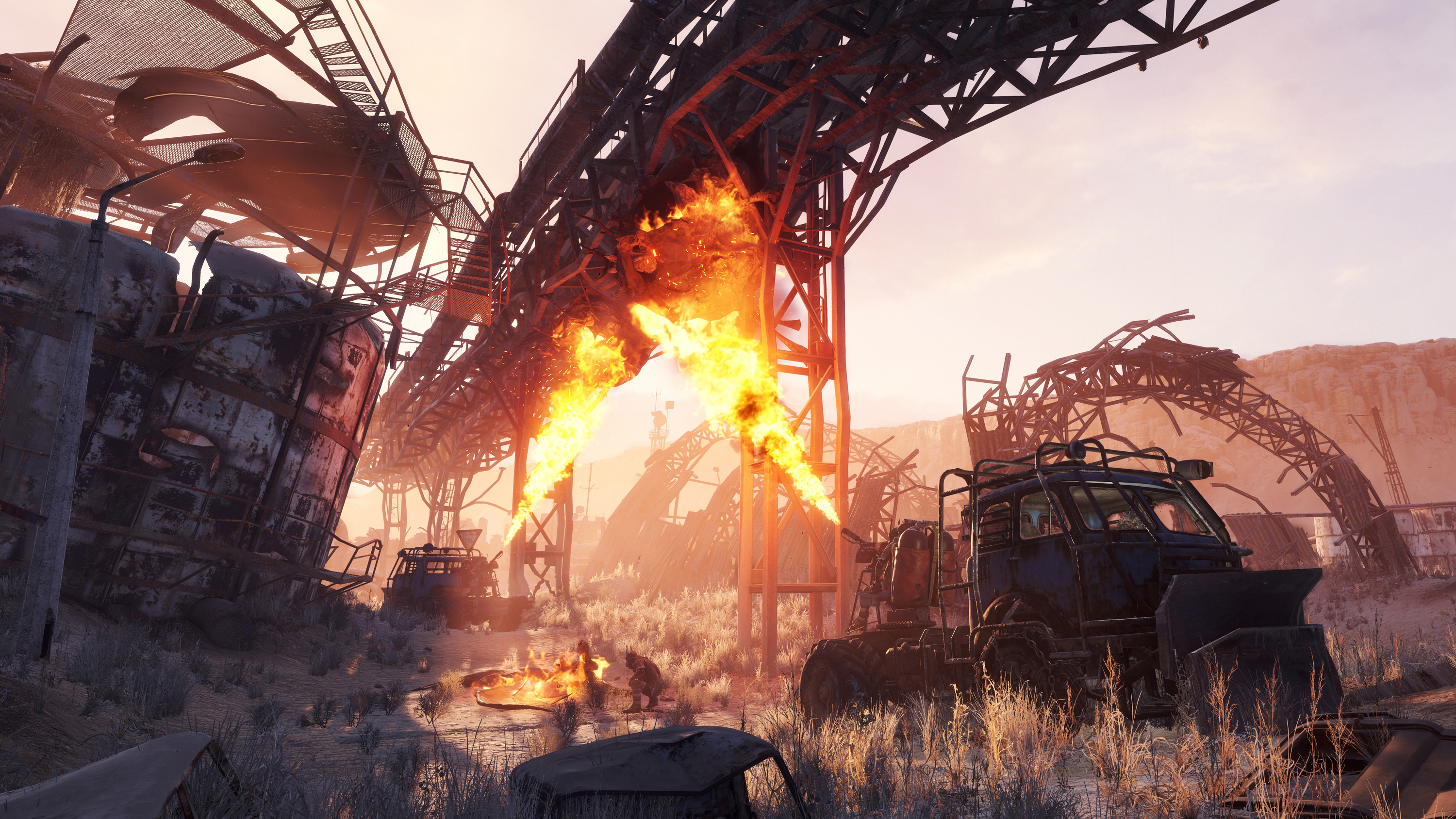Whether there’s something in the water, or the political climate has us all a bit pessimistic, we just can’t get enough of the end of the world as we know it. Zombies? Atomic bomb? Or maybe a deadly virus? Modern media is awash with various iterations of how society will crumble – and videogames are the biggest offender.
The twilight of the current console generation has seen a host of post-apocalyptic titles emerge. 2018 saw the release of icy-survival sim Frostpunk and zombie-shooter State of Decay 2, and Bethesda’s Rage 2 and Obsidian’s The Outer Worlds are set to come out in 2019. But you can’t have an apocalypse without a disaster and we’ve certainly had those too – with one game in particular springing to mind.
Fallout 76 promised to be the kind of open-world wasteland we’ve come to expect from the series, but when Todd Howard revealed the game would be online, our hearts sank and – it turns out – for good reason. Fallout 76 was a shell of what it was capable of, lacking in heart and diluting a formula that had previously worked so well for Bethesda. The general consensus among fans was: if it’s not broken, then don’t fix it.
In the wake of the fallout (pun intended), we’re left with a radioactive-shaped hole in our heart, which we should probably see a doctor about. But we may have found just the right game to fill it.
It’s not long until we see the release of post-apocalyptic survival horror Metro Exodus, with just under a month to wait before we can get down and dirty in the Russian dystopia. We saw the title earlier at Gamescom 2018 and got a preview of the game’s Autumn level, called Taiga. But now that the game is nearly complete, we couldn’t pass up a chance to take a look once again before release – and get some time with the game’s Volga (spring) and Caspian (summer) levels.
To be honest, we wanted to make sure we weren’t in for another disappointment, but instead we found a potential replacement for those Fallout blues...
Spring in your step

“This is the way the world ends. Not with a bang but with a whimper,” T.S. Eliot famously wrote in his poem ‘The Hollow Men’ and it’s a quote which swirls around our head as we navigate the deteriorating wasteland of Metro Exodus. Gray industrial buildings are sunken in a mix of filthy snow, radioactive clouds, rust, and blood.
This is the way the world ends and it’s in a way we’ve rarely seen. It isn’t stylishly sexy like Mad Max, or painted with fluorescent rebels like in the Rage series. No, those are Western depictions of the apocalypse, and Metro’s author Dmitry Glukhovsky does not abide by this mold.
Glukhovsky has made no secret that the Metro series is a commentary on the current social and political climate. Metro Exodus, along with the book Metro 2035 that essentially acts as its foreword, touches on the refugee crisis in both Russia and Europe as well as the impact the Cold War has had on the Russian mindset.
“What we lacked was an enemy,” Glukhovsky explains, referring to aftermath of the Cold War. Still geared for War, the author believes the Russian people directed their post-Cold War disdain elsewhere, focusing on the refugees fleeing to the country. They inspired Metro’s mutants. “They’re totally like us, but they are the inverse of us. We can’t communicate with them, so we hate them,” he explains.
It’s no surprise that Glukhovsky paints a picture of a dystopia unlike what we're used to in the West. His vision is influenced by the Soviet-Punk style of post-Cold War Russia and the industrialization that followed in that turbulent era. It's a period that's stayed fresh in his countrymen's minds, particularly under the reign of Putin.
“We Russians were so glad to get back to the bunker, the bunker of the Cold War in which we were sitting expecting to be bombed everyday,” Glukhovsky tells us, reiterating how much our underlying desire to find enemies because we need them influenced Metro's world.
“People do not see purpose in their lives without struggle,” Glukhovsky continues. “No one wants a real war, but they want to feel like it when they sit on the couch at home – that they're struggling against something.”

Glukhovsky's apocalypse is dark, unforgiving and full of radioactive creatures from a fever dream. You play as Artyom, who has recently fled the confines of the Moscow Metro and is now leading a band of Spartan Rangers on a train journey East to safety. The first level we play is Volga, set in springtime. You would be forgiven for mistaking it for winter, as the Aurora plows through the snows and frozen lakes of 2036 Russia. A blockade stops the locomotive in its tracks, forcing Artyom and his partner Anna to venture out, giving us a closer look at the frigid landscape.
Metro Exodus is essentially linear, though the game gives you room to wander. In fact, you'll probably have to, given its light-touch design. Rather than hand-holding you through where to go, Metro Exodus requires you to navigate the old-school way, using a compass and a map. Though frustrating at times, it actually makes for an extra sense of adventure.
While you can stray away from the marker, it’s better to stick to your goal, and venture further afield only when ammo or resources are low and scavenging is a necessity. Unfortunately, this is quite common. Every bullet counts; this isn't a game where you can be trigger happy. Each bullet may as well have a name engraved on it - like ‘Steve, the giant woodlouse creature that attacked me in the lake’.
Gathering these resources also allows for upgrades to weapons such as modifying a gun’s magazine, stock, barrel, and even adding a gadget. This can be done on the move, but you’re not safe doing so, and can easily be killed while tending to wounds or modifying weapons. You've been warned.
Fire walk with me

Perhaps the most dynamic level we played was the Caspian, summer chapter. As we walked through the sandy, desolate ruins of the desert, there was a sense of deja vu. The environment was reminiscent of the news footage from war-torn countries, as you watch soldiers troop through battle-ravaged villages: the desolation and survival culture was evident.
It's at this point that your gas mask proves more than just a fashion accessory. Radioactive dust blowing around isn’t exactly good for the lungs, so maintaining your gas mask is paramount to surviving.
Caspian catapults us later into the story of Metro Exodus. As the tension ramps up, so do the enemies. As we scavenged the ruins of mural-clad walls, we were hard-pressed to avoid running into a mutant at every turn. Snarling, ugly and dusty, they looked as though they climbed straight out of hell. Unfortunately for us, word travels fast in the underworld, and it wasn’t long before we were fleeing from a horde of crawling creatures, all while careful to avoid flaming tumbleweeds that rolled by. “Should have been more careful with the bullets,” we hiss to no one in particular as we slam mutants with the butt of a rifle.
And that’s really the point of Metro: it’s a thinking person’s Fallout. There's a political story encased in a dark and industrial world, but you'll miss it if you don't look hard enough. For those who prefer to simply take their games at face value, it also offers that – with more mutants than you can shake a stick at and a collection of madcap characters.
Metro Exodus is due to release for PC, Xbox One and PlayStation 4 on February 15, 2019.
Make sure to check out our Gamescom Metro Exodus preview, where we played Metro's Taiga autumn level and spoke to the 4A Games devs.
from TechRadar - All the latest technology news http://bit.ly/2RPnAmc